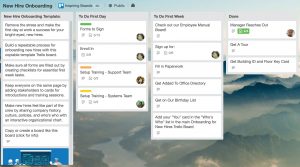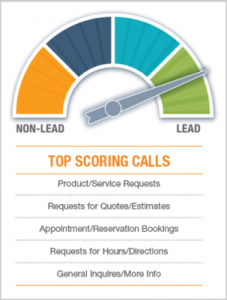— May 21, 2019
A virtual agency can help you create a global business with a remote-only team. Learn how to manage your virtual agency team in this article.
It’s a trend that’s impossible to miss:
Remote work.
What used to be limited to buzzy Silicon Valley startups is now a dominant trend (some would say, a movement) across the world. More and more people are working remotely than ever before, and bigger and better companies are going remote only.
For agencies, remote work opens up a whole new world of opportunities. You’re not limited by your local talent; you can build a virtual agency filled with A-players from around the world. This gives you access to a global market, not just the businesses in your city.
The office rent savings and zero commute time are just added bonus.
But building a virtual agency is easier said than done. From hiring to management and everyday communication, going remote changes everything you know about running a business.
In this guide, I’ll demystify the virtual agency management process. You’ll learn how to build systems to make management easier, and how to develop processes so you can operate with maximum efficiency.
What It Means to Manage a Virtual Agency
The traditional agency model is built largely off presence. You find clients among the businesses in your city. And you hire from your local talent pool.
This is why large agencies make it a point of pride to have offices in many cities.
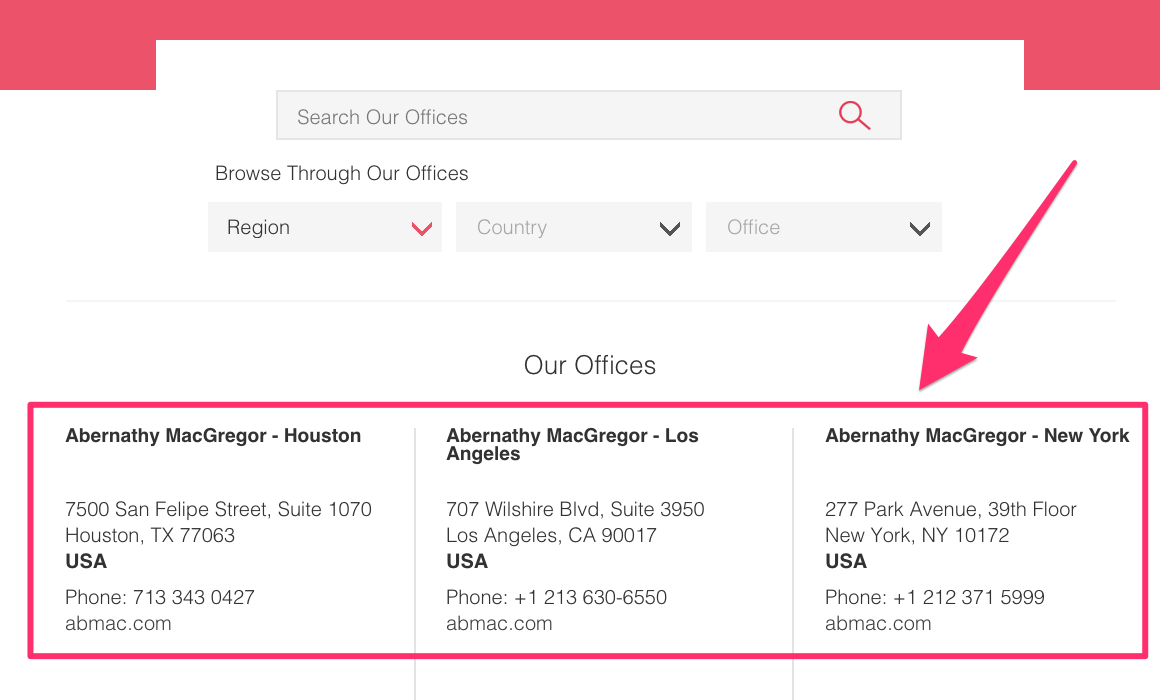
Havas has offices in virtually every major city across the world, including several offices in New York alone.
While this “on-location” model has its disadvantages, collaboration isn’t one of them. Problems are so much easier to solve when you can get people together in the same room.
This gives traditional agencies significant leeway in terms of processes and systems. You don’t have to invest as heavily in, say, building a knowledge wiki if you can walk down the office and ask the concerned person directly.
If you’re building a virtual team for your agency, your approach will be completely opposite. You’re not limited to local talent; you can hire from across the globe. But you also can’t walk down the hall and hash things out in the conference room.
In other words, while a traditional agency can get away with limited systems, a virtual agency team can’t. You have to obsessively focus on developing processes that help you collaborate and communicate better.
This is the gist of the approach to managing a virtual agency. Your priority should be to:
- Develop robust systems and processes that help you communicate and collaborate better
- Hire people with the values and skills to follow these systems and processes
In this systems-first approach, you wouldn’t rely on ad-hoc measures and individual initiative. Rather, you would have processes built into your management structure to facilitate collaboration.
For example, in a typical agency, project managers aren’t obligated to share lessons from each project with others. It is largely up to individual initiative.
But in a systems-first agency, you would make debriefing a core part of your project management system. A project wouldn’t be considered complete until the manager completes a post-project analysis.
By focusing on systems and hiring people who can thrive within them, you’ll not only make remote work easier, but also help your agency scale faster.
In the next section, I’ll focus on this aspect of building a virtual agency – setting up management systems.
Managing a Virtual Agency
When you’re building a virtual agency, it can be tempting to just find clients, hire a few people, and figure things out along the way.
This approach is essentially built on poor foundations. You don’t have the underlying systems to help you scale, especially in an online-only context. You might bag a few clients, but once you grow beyond a “2 pizza team”, you’ll struggle to keep track of things.
Which is why I encourage entrepreneurs to think deeply about their processes, systems, and practices before they reach out to a single client or potential hire. Build a strong foundation and you’ll find growing, and managing your growing agency, much easier.
Here are a few of our best tips for managing your virtual agency.
1. Build your agency around collaboration
Far too often, businesses make the mistake of thinking that “collaboration” is all about buying the right tools.
In truth, collaboration can’t be bought with tools or weekend workshops. It’s not something you can tack onto your organization.
Rather, collaboration has to be built into your company’s DNA.
Think of how you communicate between and across teams. If you don’t have a culture that encourages idea sharing and casual “water cooler” conversations, no number of chat tools can help you collaborate well.
Being collaboration-first is particularly important for virtual agencies. After all, you can’t collaborate in-person; you have to do everything in virtual spaces.
Some ways to do this are:
- Make goal setting a collaborative exercise. This turns the goal into a sort of “contract” between management and employees.
- Involve team members in key decisions so they get a sense of ownership in the project.
- Factor in each employee’s wants and career trajectory when setting team roles. Not only will this give them a stronger sense of ownership, but it will also help reduce your attrition rate.
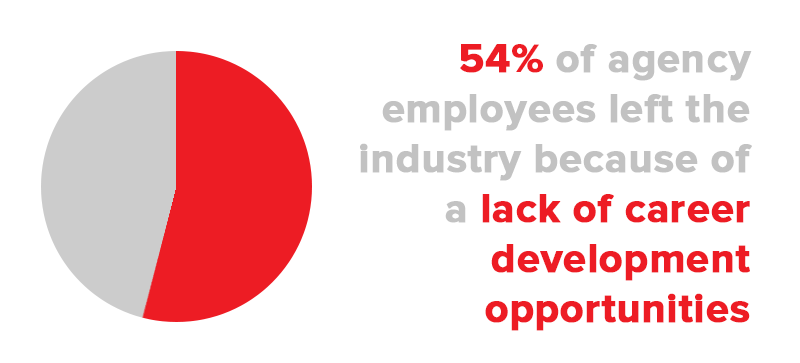
- Make communication as seamless as possible. Adopt tools like Workamajig where team members can communicate directly within the project space.
- Adopt transparency as a core company value. People are more motivated to work together when they know exactly what they’re working towards and what they, the company, and the clients stand to benefit.
- Hire and encourage team players instead of individual star performers.
This covers just the basics, of course.
2. Prioritize communication as a core value
Virtual agencies, more than most businesses, can’t afford to ignore communication. Your entire business depends on your ability to communicate ideas quickly, precisely, and succinctly.
Just like collaboration, you’re not going to get much mileage out of adopting better communication tools. Rather, you have to make it a core company value.
In practice, this can mean letting go of an otherwise good performer if he/she doesn’t communicate well. Or make building communication plans a core part of your project management approach.
Everything you do, from the people you hire to the way you manage projects, has to be seen through the lens of communication.
Some ways to prioritize communication in your virtual agency include:
- Make communication skills a key quality when assessing new hires.
- Encourage “over-communication” right from the moment you onboard new hires.
- Make working “together” a priority. This can be something as simple as turning on the webcam for an hour so everyone can see each other while working. This can mitigate the isolated nature of virtual work.
- Bake communication into your project management approach. Along with the risk management and financial plans, make communication plans a key part of your project planning process as well.
- Hold daily standups over video. Not only does this make your team more accountable, but it also gives you valuable one-on-one facetime.
And of course, using better communication tools doesn’t hurt. Use Slack, HipChat, Zoom, or whatever else fits your agency’s needs better. If your team is working out of different time zones, tools like Spacetime.am can help as well.
3. Document processes and turn them into templates
Blame it on their creative DNA, but agencies have typically been averse to the idea of “process”. They’d much rather wing it than dumb it down into a proven checklist.
As a virtual agency, you can’t afford to adopt the same approach. “Winging it” can’t really work when you’re working in different cities and even timezones.
Instead, your approach should be to:
- Document everything you do, and
- Turn anything you do multiple times into a template
For instance, every agency follows the same few steps when creating a project proposal. In a process-oriented approach, you would break down all these steps into a list of to-dos. You’d then create separate templates for all the different types of proposals you need to send.
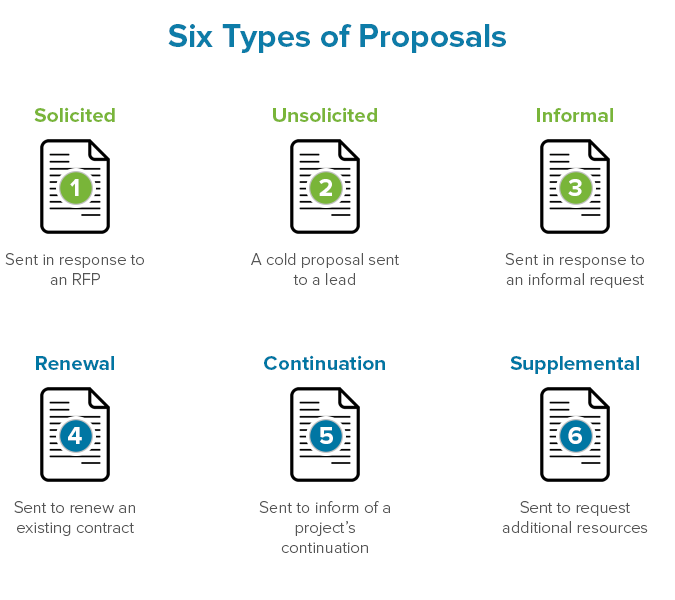
This approach removes the possibility of human error and also makes your agency easier to scale. When you – and your employees – know exactly what to do and how to do it, you will have an easier time growing.
More importantly, a process-oriented approach removes the “fog of war” that often runs through virtual workspaces. No one worries about what to do when they have checklists and templates to follow.
Do this before you start hiring and you’ll have a much better time running a virtual agency.
4. Automate as much as possible
Automation goes hand-in-hand with the process-oriented approach I outlined above. Once you start breaking down every process into its constituent tasks, you will find that you can automate many of them.
For example, one of your to-dos might be to remind freelancers about an upcoming deadline two days before the delivery date. Instead of doing this manually, you can create an automated reminder that works for every project, not just the current one.
Apart from productivity gains, automation also reduces human error. Your team might forget to send reports and email reminders; an automated reminder won’t.
Go back to the processes you created earlier. Categorize the constituent to-dos in each process as follows:
- Recurring and periodic, i.e. the task is repeated on every project and recurs at specific intervals, such as sending weekly reports.
- Repeating only, i.e. the task is repeated on every project but happens only once, such as sending a project proposal.
- Unique and periodic, i.e the task is unique to a particular project but recurs periodically, such as a special report sent out weekly to specific stakeholders.
- Unique, i.e. the task is unique to a particular project and does not repeat.
Any task that falls into Category #1 and #2 is a prime candidate for automation. Use tools like Workamajig which offer built-in automation rules to make the entire process easier.
5. Make project planning a top priority
Construction firms and manufacturing companies focus obsessively on project management and planning. But for many agencies, planning is an afterthought, a way to get things done with some semblance of control.
Little wonder that nearly 51% of project failure can be attributed in part to inadequate project planning.
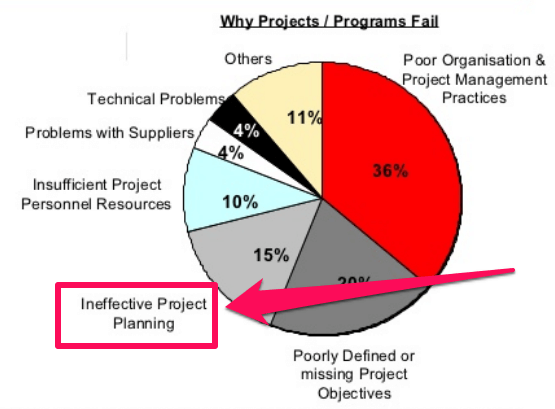
Virtual agencies, in particular, live and die by their ability to plan and manage their activities. The lack of one-on-one interaction – with clients as well as employees – can impact visibility and leave you wondering “what’s next?”.
The solution is to buffer up your project management capabilities, especially how you go about planning.
Ditch your ad-hoc plans for an integrated project management approach. This involves gradually developing the project’s scope and purpose through a project charter, project scope statement, and project management plan (in that order).

At each step, you would add project details and get feedback from stakeholders to make sure you fully understand the project.
In an integrated approach, you would pay as much attention to change management, project monitoring, and project debriefing (aka post-project analysis) as you do to the actual execution. Some ways to do this are:
- Developing a change management plan to accept and monitor change requests. This gives you a formal framework to deal with updates and scope changes, instead of responding to Skype chats and long email threads.
- Creating a reporting framework to create all the reports you need to send during the course of a project – status reports, performance reports, etc. This framework should identify the minimum requirements every report should meet, and what’s a must-have, good-to-have, and nice-to-have in your reporting standards.
- Monitoring milestones and daily activity to make sure that everything is on track. Something as simple as a Gantt chart can give you a great deal of insight into a project’s progress. Project management software that lets you track your team’s productivity is also a huge bonus.
- Developing a knowledge repository to document all the learnings from successful and failed projects. This should be a part of your post-project analysis where you break down the project to see what went right and what didn’t. Anything you learn should be added to a centralized knowledge bank that you can tap into for future projects.
Managing a virtual agency requires a very different set of skills than the traditional model. More than people management, you have to invest in developing processes and best practices. Collaboration and communication, often an afterthought for traditional agencies, has to be at the forefront of your organizational approach.
Business & Finance Articles on Business 2 Community
(78)
Report Post
